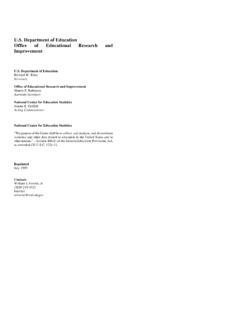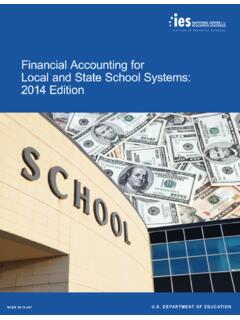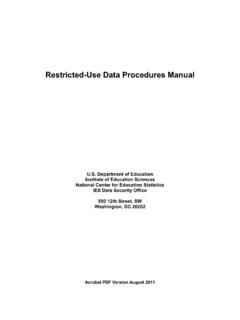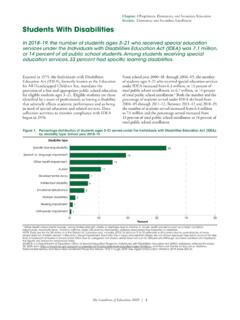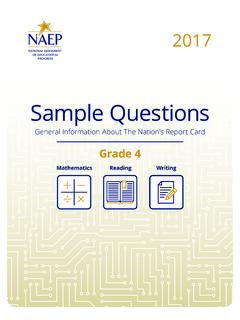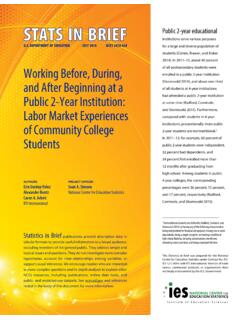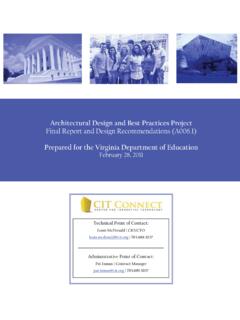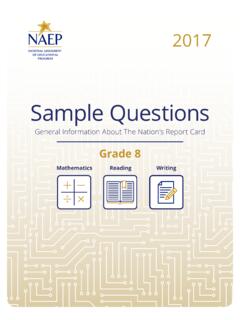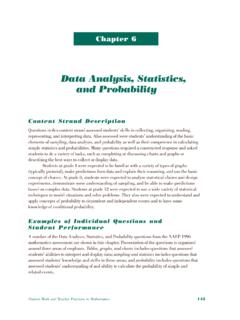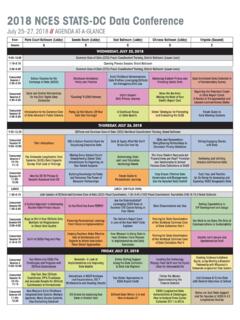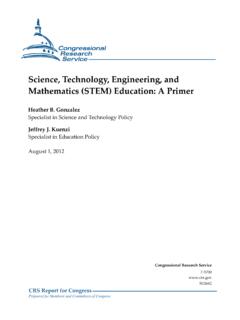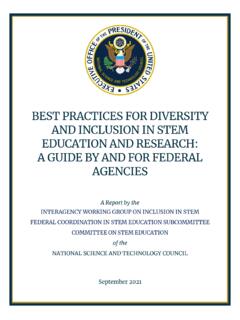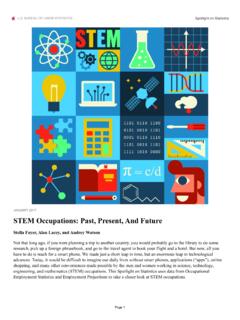Transcription of STEM Attrition: College Students’ Paths Into and Out of ...
1 stem Attrition: College Students Paths Into and Out of stem FieldsStatistical Analysis ReportNCES 2014-001U. S. DEPARTMENT OF education This page intentionally left blank. stem Attrition: College Students Paths Into and Out of stem Fields Statistical Analysis Report NOVEMBER 2013 Xianglei Chen RTI International Matthew Soldner Project Officer National Center for education Statistics NCES 2014-001 DEPARTMENT OF education Department of education Arne Duncan Secretary Institute of education Sciences John Q.
2 Easton Director National Center for education Statistics Jack Buckley Commissioner The National Center for education Statistics (NCES) is the primary federal entity for collecting, analyzing, and reporting data related to education in the United States and other nations. It fulfills a congressional mandate to collect, collate, analyze, and report full and complete statistics on the condition of education in the United States; conduct and publish reports and specialized analyses of the meaning and significance of such statistics; assist state and local education agencies in improving their statistical systems; and review and report on education activities in foreign countries.
3 NCES activities are designed to address high-priority education data needs; provide consistent, reliable, complete, and accurate indicators of education status and trends; and report timely, useful, and high-quality data to the Department of education , the Congress, the states, other education policymakers, practitioners, data users, and the general public. Unless specifically noted, all information contained herein is in the public domain. We strive to make our products available in a variety of formats and in language that is appropriate to a variety of audiences.
4 You, as our customer, are the best judge of our success in communicating information effectively. If you have any comments or suggestions about this or any other NCES product or report, we would like to hear from you. Please direct your comments to NCES, IES, Department of education 1990 K Street NW Washington, DC 20006-5651 November 2013 The NCES Home Page address is The NCES Publications and Products address is This report was prepared for the National Center for education Statistics under Contract No.
5 ED-07-CO-0104 with RTI International. Mention of trade names, commercial products, or organizations does not imply endorsement by the Government. Suggested Citation Chen, X. (2013). stem Attrition: College Students Paths Into and Out of stem Fields (NCES 2014-001). National Center for education Statistics, Institute of education Sciences, Department of education . Washington, DC. For ordering information on this report, write to ED Pubs, Department of education Box 22207 Alexandria, VA 22304 or call toll free 1-877-4-ED-Pubs or order online at Content Contact National Center for education Statistics (800) 677-6987 iii Executive Summary Producing sufficient numbers of graduates who are prepared for science, technology, engineering, and mathematics ( stem ) occupations has become a national priority in the United States.
6 To attain this goal, some policymakers have targeted reducing stem attrition in College , arguing that retaining more students in stem fields in College is a low-cost, fast way to produce the stem professionals that the nation needs (President s Council of Advisors on Science and Technology [PCAST] 2012). Within this context, this Statistical Analysis Report (SAR) presents an examination of students attrition from stem fields over the course of 6 years in College using data from the 2004/09 Beginning Postsecondary Students Longitudinal Study (BPS:04/09) and the associated 2009 Postsecondary education Transcript Study (PETS:09).
7 In this SAR, the term stem attrition refers to enrollment choices that result in potential stem graduates ( , undergraduates who declare a stem major) moving away from stem fields by switching majors to non- stem fields or leaving postsecondary education before earning a degree or The purpose of this study is to gain a better understanding of this attrition by: determining rates of attrition from stem and non- stem fields; identifying characteristics of students who leave stem fields; comparing the stem coursetaking and performance of stem leavers and persisters; and examining the strength of various factors associations with stem attrition.
8 Data from a cohort of students who started their postsecondary education in a bachelor s or associate s degree program in the 2003 04 academic year were used to examine students movement into and out of stem fields over the subsequent 6 years through 2009. Analyses were performed separately for beginning bachelor s and associate s degree students. For brevity, these two groups are frequently referred to as bachelor s or associate s degree students in this study. Selected findings from this SAR are described below.
9 1 In this study, stem major fields include mathematics; physical sciences; biological/life sciences; computer and information sciences; engineering and engineering technologies; and science technologies. For a detailed list of the fields designated as stem in this SAR, see appendix C. iv EXECUTIVE SUMMARY stem Entrance About 28 percent of bachelor s degree students and 20 percent of associate s degree students entered a stem field ( , chose a stem major) at some point within 6 years of entering postsecondary education in 2003 04.
10 At the bachelor s degree level, biological/life sciences was the most popular field, attracting 11 percent of students, and mathematics and physical sciences were the two least popular fields, attracting 2 3 percent of students. At the associate s degree level, a higher percentage of students chose computer/information sciences (9 percent) than other stem fields (1 6 percent). Attrition Rates in stem and Non- stem Fields Many of these stem entrants left stem several years later by either changing majors or leaving College without completing a degree or certificate.
